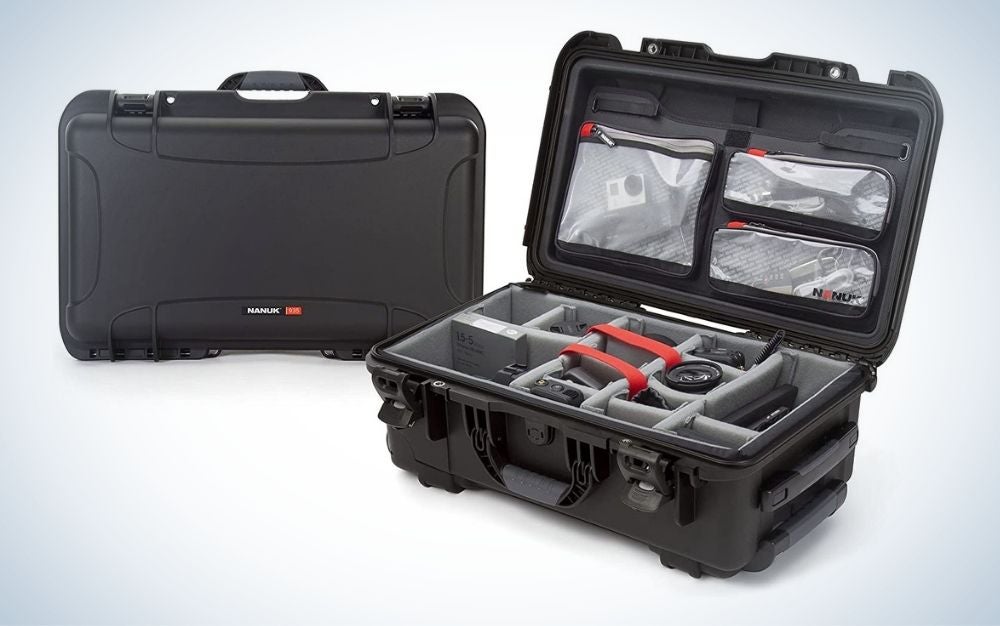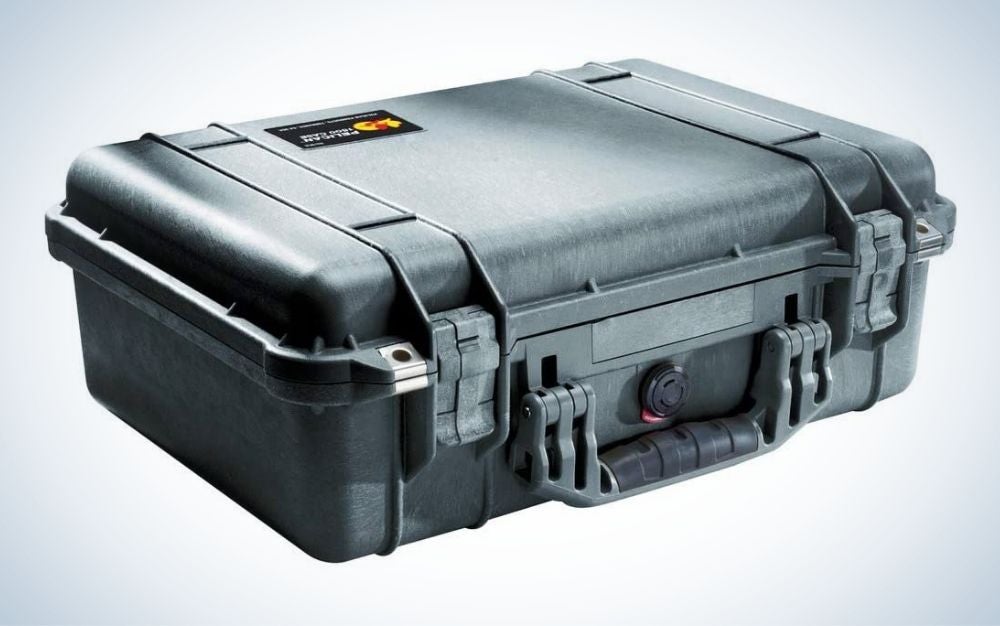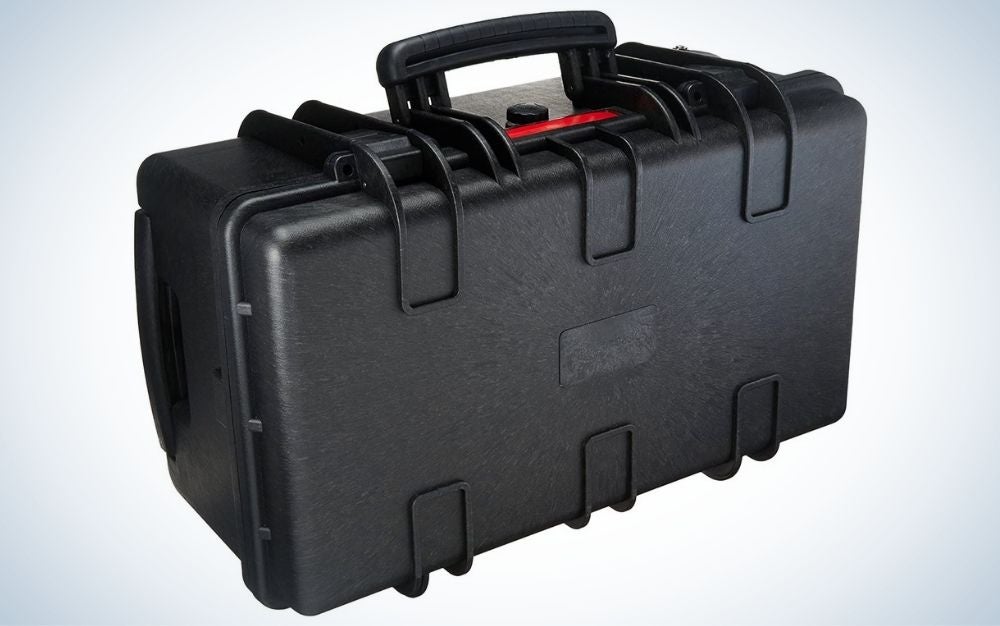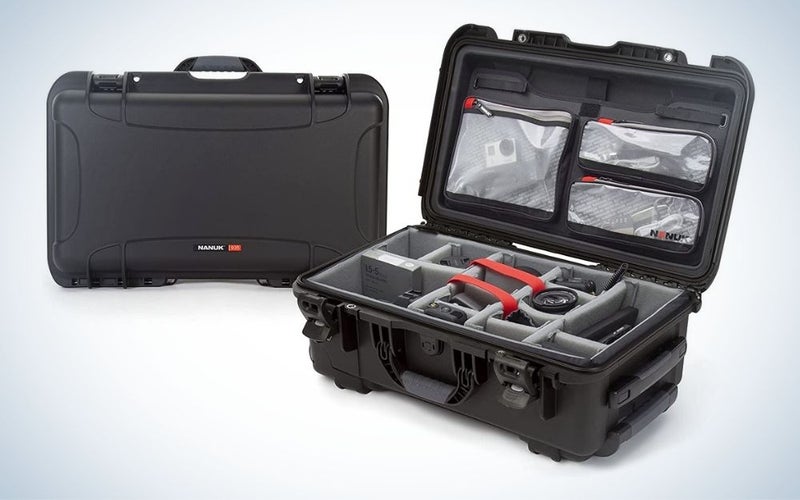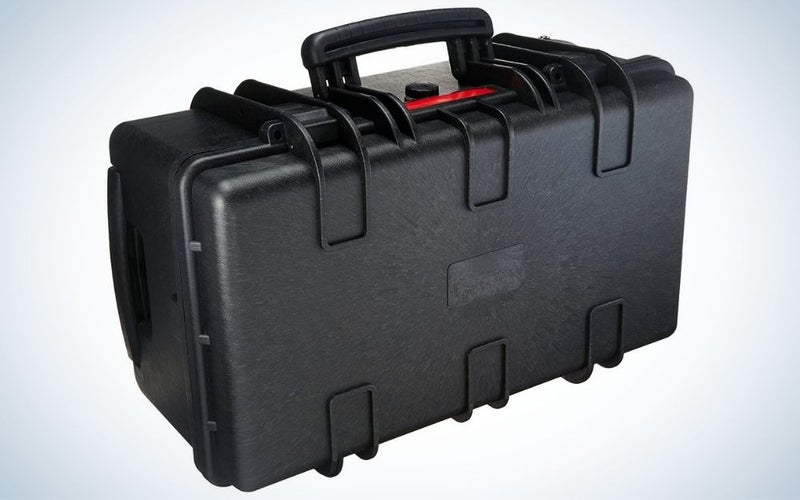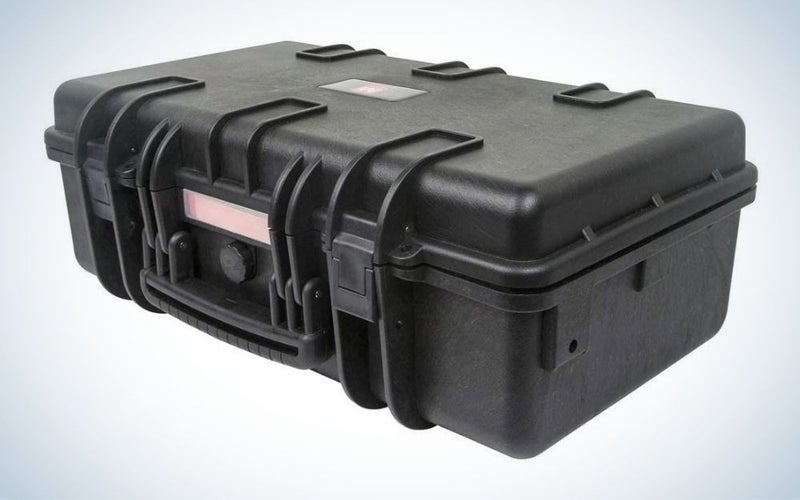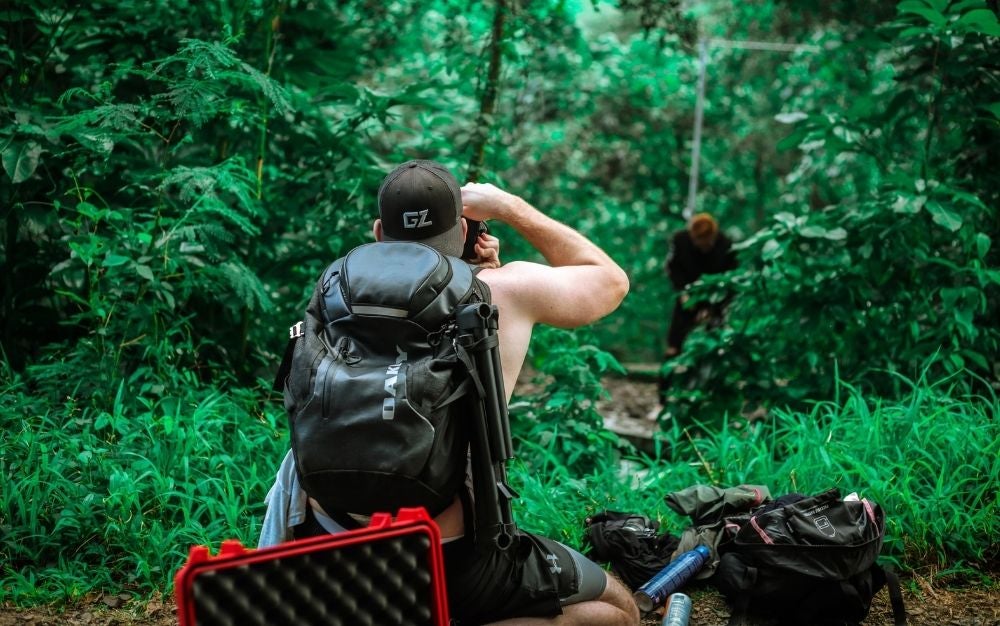
It’s no secret that photo gear is quite the investment—cameras can run in the thousands of dollars, and with super-sensitive equipment that makes all the difference in producing a quality shot, you want to be sure your camera is both protected and secure. Whether you’re hauling your cameras through inclement weather or tossing it in an overhead airplane compartment, the best camera cases can make all the difference in safeguarding your lenses.
These weather-resistant, waterproof cases are designed to take a beating while keeping everything inside secure. The best camera case should also be easy to carry, easy to organize, and easy to store in a studio or on a flight. Even if you only use your camera for casual photography, a hard case is a handy way to keep equipment safe from bumps and falls. Your gear is a precious and delicate instrument and must be treated as such. Even minor knocks can disrupt the sensitive photography mechanism of today’s lenses and bodies. Defend your photography gear against the forces of nature—and the forces of gravity—with the best camera case.
- Best for day trippers: Pelican 1500 Case With Foam
- Best for world travelers: Nanuk 935 Waterproof Carry-On Hard Case with Lid Organizer
- Best for studio photographers: Amazon Basics Large Hard Rolling Camera Case
- Best for new photographers: Monoprice Weatherproof Shockproof Hard Case
- Best for photographers on a budget: Casematix Hard Shell Camera Case
What to consider when shopping for the best camera case
How should you store and transport your camera and camera accessories? Picking the right camera case depends on a few things: the size of the equipment, the material of the case, the ergonomics of the handles, and the price. The best camera case will suit your needs and make a photo session or trip as painless and damage-free as possible.
Should you use a camera case or a camera bag?
The big difference between a camera case and a camera bag is durability. Camera slings, shoulder bags, and camera backpacks are great for carrying photography gear and will offer some protection against bumps. However, hard camera cases are larger, tougher, airtight vaults offering the highest caliber of protection.
Hard camera cases provide optimal storage solutions for your photography equipment. They are waterproof and crush-proof beasts that laugh in the face of even the rudest airport baggage handler. They stand up against torrential rain, and most will even keep camera equipment dry if the case is accidentally dunked in a river or lake.
If you only use a point-and-shoot camera or small camera bodies and pancake lenses, a big, robust case is overkill. But if your current camera bag is bursting with photography equipment, it’s time to upgrade to a roomy and secure case.
What size case do you need?
The best camera cases come in a variety of sizes. For traveling, an exterior size of approximately 20 x 12 x 8 inches is the perfect dimension for most carry-on luggage but always check with the airline first.
Bigger cases can give you a few extra inches of space. These are great for photographers with a lot of camera gear to pack but can cost more. And if you don’t have enough stuff to fill the case or you don’t have large enough foam inserts, it may be more difficult to keep everything inside secure. Think of a shoebox filled with shoes vs. a shoebox filled with a few marbles.
Material matters: It’s what’s on the inside and the outside—that counts
Is the outer shell up to the challenge? Polypropylene blends are good for rugged protection without the weight of heavier plastic and metal materials. For travel, the case must be crushproof. A sturdy camera case should also be watertight and airtight. If the case is airtight, it should have an automatic pressure equalization valve for any significant changes in air pressure (e.g. air travel). The airtight seal should be rated at IP 67 or above, meaning dust and water can’t get inside.
The interior of the case should also be customizable. Pick and pull foam padding allows you to layout the case however you’d like, but once you pull out a piece of foam, you’ll be stuck with that layout. Soft removable panels can be used to compartmentalize the camera case and are easy to adjust and switch.
How much should you spend?
Beware of hard camera cases that lean too far in the budget category, even for small cases. If protection is important, this is not the time to try and save a few dollars by opting for an inferior product. A standard 50 x 30 x 20cm case should run between $100 and $300. Higher-end products may have stronger materials, which can be worth the money. However, unless you’re a photographer sent on assignment into a war zone, the added strength may not be needed.
Trusted brands like Nanuk and Pelican hold up better than generic cases, and all the moving parts (lids, wheels, etc.) operate smoothly. They may cost more, but you know you’re getting a high-quality product made with proven materials.
Do you need a portable case?
Hard camera backpacks are a great tool for photographers in need of on-the-go durability. Any wearable case must be comfortable, as some hard cases will dig into your shoulders at an uncomfortable angle. Try on a hard backpack case before you buy. Make the proper size adjustment to avoid injury and annoyance. And know that some so-called hard shell backpacks are only reinforced on the outside panel. The entire pack is not crush-proof.
Rolling camera cases are pure magic when lugging equipment through airports and train stations. Also, consider the need for laptop space or additional storage. Some cases can easily hold a laptop in a designated pouch or compartment, while others are strictly camera equipment-only, and shoving a laptop on top of the equipment could cause damage or scratches.
The best camera cases:
The first step to picking the best camera case is to determine what size you need, then look at durability and storage features. Finally, have a budget in mind to avoid over-spending on something you may not need. Look for trusted brands in a crowded market to make sure the case can live up to any marketing hype.
The best camera case for day trippers: Pelican 1500 Case With Foam
Pelican
The Pelican 1500 case has an interior size measuring 16.75 x 11.18 x 6.2 inches, great for a camera body and lenses. It’s not too big for easy transport. The pick and pull foam keeps your lenses and camera body snug. If you have more photography gear, you’ll need a larger case, but for quick trips when you only need to pack your go-to equipment, the Pelican case is a strong, waterproof protector. It’s also available in other colors: orange, silver, yellow, and tan. Pelican makes some of the best cases on the market, and the 1500 case is no exception.
The best camera case for world travelers: Nanuk 935 Waterproof Carry-On Hard Case with Lid Organizer
Nanuk
If you’re going on a long trip or about to embark on a hectic week of shooting, the Nanuk 935 becomes your own rugged travel studio. The Nanuk case with an interior of 20.5 x 11.3 x 7.5 inches comes with a lid organizer for tablets, laptops, and power supplies. The strong latches give you peace of mind even if the case is in the checked baggage compartment. Wheels and a retractable handle work smoothly and make racing through the airport less frantic. The IP67-rated seal keeps dust and water out, and the case can be safely submerged in 3 feet of water for up to 30 minutes. Plus, the pick and pull foam is easy to optimize for your tools. For traveling far and wide, this is a tough waterproof camera case designed for mobility.
The best camera case for home studio photographers: Amazon Basics Large Hard Rolling Camera Case
Amazon Basics
You may be surprised at how strong this Amazon Basic camera case is, especially for photographers who shoot mostly indoors. The case has all the features of brand name boxes and is (almost) as strong. This is a great case if your current bags and camera cases are overflowing with equipment. The interior size is 20.5 x 10.8 x 7.5 inches, and the foam can be cut and adjusted to fit all your extra lenses and spare camera bodies. Should you use this on a mountain climbing expedition? Probably not. But the case provides substantial protection for storing camera bodies and extra photography gear at home.
The best camera case for new photographers: Monoprice Weatherproof Shockproof Hard Case
Monoprice
The Monoprice camera case is the Goldilocks of camera cases—it’s not too big, not too small, not too heavy, not too flimsy. It’s just right. For anyone new to photography who wants a case they can experiment with to find the right arrangement, the Monoprice is a great place to start. The internal 20.71 x 10.83 x 6.67 inches of space is enough for 2 DSLR cameras with room to spare. The included foam isn’t ideal, so replace it with Pelican inserts for optimum protection. If you’ve never used a case and don’t know what you want or need, the Monoprice is a jack of all trades.
The best camera case for photographers on a budget: Casematix Hard Shell Camera Case
CASEMATIX
The Casematix camera case is friendlier on the wallet. Going that cheap means you’re giving up size and durability. This case is really only for small cameras and can’t withstand the weight of a person sitting on top of it. The 12 x 9.5 x 3.5 inch case doesn’t come with foam or inserts, so you’ll need to add that to the cost. However, if a photographer needs only a simple carrying case to protect against typical bumps and scuffs, the Casematix camera case is an affordable solution. And for the price, might as well buy a few to keep your home studio organized.
FAQs
Q: What are camera cases made of?
day’s hard camera cases are typically made of industrial-grade polypropylene blends. This stuff is tough enough to withstand being dropped down a flight of stairs or a small hillside. You can even stand on the case if you so desire. That said, the outer shell is just part of the case’s defense system. How you pack the inside of the case matters. Pick and pull foam and adjustable dividers need to be properly spaced to provide optimal protection. Everything should fit snugly even when jostled. You can buy extra foam or more inserts, but the price adds up. Plan your case layout before you start ripping apart foam. Measure twice, cut once.
Q: What is the best way to protect your camera?
A hard case is the best way to protect your camera. The outer shell can withstand whatever mother nature can dish out. But even if you stay indoors, a hard case is needed to defend against the pull of gravity. Keep dust and water out by using a case with an International Protection (IP) rating higher than 65. The IP rating is how the integrity of the seal is graded. Anything above IP65 will keep out dust particles and torrential rain. A case with an IP rating of 67 can be submerged in water up to 1 meter deep for as long as 30 minutes. When not in use, store your camera in a hard, waterproof case with properly cut foam inserts or strategically placed dividers.
Q: What is the best camera case for traveling?
The best camera case for traveling needs to be rugged and rolling. Baggage handlers and luggage carousels are brutal on a camera. But a strong case with a well-fitted interior is more likely to make it through the journey. Many camera cases are sized to fit in overhead compartments and can be used as carry-on luggage. You’ll also want a case with wheels and a retractable handle that’s easy to deploy. The Nanuk 935 Waterproof Carry-On Hard Case checks all those boxes. It is hands down the best camera case for travel.
The final word on the best camera cases
Whether you’re venturing outside or staying inside the home studio, it’s important to keep your camera gear protected with the proper case. While bags, camera slings, and backpacks are great for carrying photography equipment around, sometimes you need the rigid protection only found in a hard waterproof camera case. Measure your cameras and look at the specs of the cases to ensure everything you need will fit comfortably. Foam inserts may need to be cut or torn apart at perforated sections, and dividing walls will need to be placed accurately. But with a few adjustments, the best camera case keeps all your equipment safe and organized.
The post Best camera cases in 2022 appeared first on Popular Photography.
